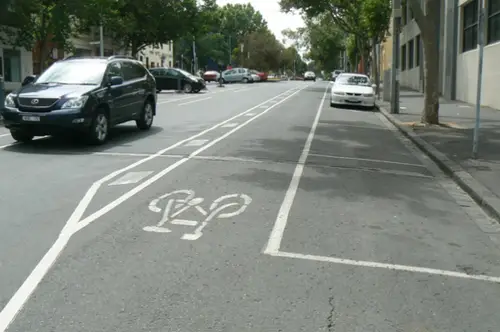Like other towns and cities in developing countries, Bangkok’s urban tissues are infected with sprawl and an obsession with cars. Since the inception of the Litchfield Plan decades ago – long recognised as the city’s first spatial development plan – Bangkok has been a car-oriented city. This American-style Comprehensive Plan proposed the building of a network of roads, resulting in an urbanisation pattern where highways lead, fragment, and eventually disperse land use development. This legacy is still ongoing in other Thai towns and cities where roads are the benchmark of the ‘modern.’ By contrast, the availability of other choices – be it cycling, walking, or facilities for crossing the three-lane streets without feeling threatened – is treated as optional and tangential to the bigger existence of cars.
However, over the past ten years the city has rolled out mass transit alternatives such as the elevated-rail skytrain (BTS) and the underground (MRT) which have been enthusiastically received and well used by commuters, locals and tourists alike. These have revolutionised how Bangkok perceives urban mobility, i.e. ‘hey, we don’t necessarily need car to get around anymore.’ To further the city’s move toward a sustainable urban future, earlier this year the city introduced the BRT – the Bus Rapid Transit – to relieve the congested roads.
Inspired by success stories in Bogotá and Jakarta, the first of five routes routes of the BRT serves a length of 16 kilometers via 12 stations in the southern core of Bangkok, characterised by a mix of highly dense residential, commercial, and employment areas. However, unlike its older cousins, the reception and perception of the BRT is lukewarm at best. In installing the BRT facility side by side with the road, some drive space has been sacrificed, generating friction in the politics of space. The new bus-only lane is perceived by the drivers as taking away ‘their driving space’, as if that common resource belongs solely to them in the first place. Worse yet, the city may consider ‘re-evaluating’ the whole scheme in terms of its ‘efficiency.’
If efficiency should be the gauge as purported, BRT is decidedly much cheaper, more cost-effective, and more energy-efficient than lightrail/monorail. It is also very affordable, not only for the commuters but also for the city governments in this trying time of financial restraint. Contrary to popular belief, not all Bangkokians are generous and patient. It is interesting to note that the BRT is one, if not the only, of the rare instances where a public mode of on-road transport is given priority. Thus, the perception of ‘us’ or, worse yet, ‘me’ in the car looking out at ‘them’ on the buses moving fast and free may be frustrating to some. In a city where meaningful civic public space does not extend beyond the compound of a mall, the civic culture of Bangkokians is now put to the test.
A city can’t be considered a city if it fails to afford and expand choices for its dwellers. Should the BRT really come to pass, it would be a sad day for both Bangkok and Thailand – a country which has only just begun to embrace a transport network which provides multiple alternatives for its residents.
Photo: Connor Williams


